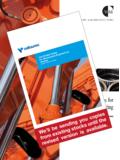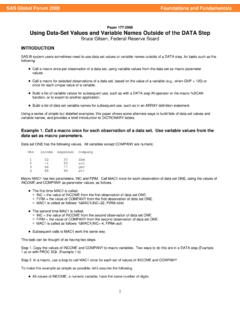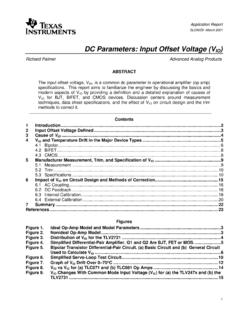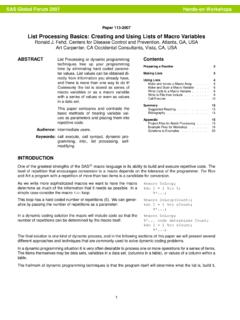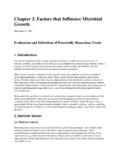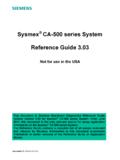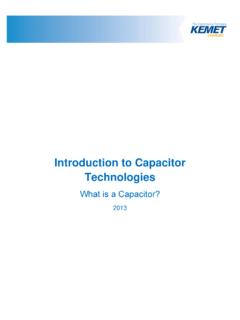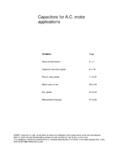Transcription of Pipe steels for modern high-output power plants - …
1 Pipe steels for modern high - output power plants METALLURGICAL PRINCIPLES LONG-TERM PROPERTIES RECOMMENDATIONS FOR USE. FILLER METALS AND THEIR USE IN WELDING. / Vallourec / Pipe steels for modern high - output power plants Part 1: Metallurgical principles - Long-term properties - Recommendations for use Authors: B. Hahn, Vallourec Deutschland GmbH, D sseldorf W. Bendick, Salzgitter Mannesmann Forschung GmbH, Duisburg This article examines martensitic and bainitic materials which will, in future, permit power plants , but also for upgrading steam temperatures of up to 625 C in fossil-fuelled power -generating plants . Re and modernizing projects in existing evaluation of the creep rupture strength data for E911 and P92 provide designers power stations which are still technical- with reliable characteristics data for calculation.
2 A new 12 % chromium steel (VM12- ly and economically viable and impor- SHC) closes the gap between the 9 % chromium steels E911 / P92 and austenitic tant. pipe steels for the heated boiler-tube zone in a temperature field up to 620 C. Development of the welding filler materials examined here must be accomplished 2. Properties of martensitic virtually simultaneously with the development of each respective parent material. 9-12 % Cr steels and recom- The strength data determined for the weld in creep rupture testing is needed by the designer to assure safe design of components continuously exposed to high mendations for their use pressure and temperature. The development for high -temperature steels of welding filler materials which, on the one hand, meet the strength and corrosion standards of General material properties of the parent materials and, on the other hand, assure good weldability and adequate 9 % Cr steels toughness, remains a demanding task.
3 Part 2 of the article (Page 12) reports on this. The development of the steels T/P91. (X10 CrMoVNb9-1), E911 (X11Cr- MoWVNb9-1-1) and T/P92 (X10 CrW- 1. Introduction MoVNb9-2) started off from the marten- sitic 9 % Cr steel T/P9 (see Table 1). The projects currently in service or the creep rupture strength of the steels The German steel X20 CrMoV11-1, which under preparation at both national and E911 (X11 CrMoWVNb9-1-1) and T/P92 belongs to this group of materials, has international levels prove that, despite (X10 CrWMoVNb9-2) was reassessed for also been included in the considerations major efforts and advances in the uti- Europe by the European Creep Collabo for the purpose of comparison.
4 Lization of alternative energy sources, rative Committee (ECCC), and this has fossil energy sources will continue to put a stop for the time being to further The higher creep rupture strength of serve as the basis for power generation raising steam temperatures to above X20 CrMoV11-1 steel compared with worldwide for some years to come. 625 C [1]. Properties, application limits T/P9 is essentially due to the complex Tighter economic constraints and the and processing conditions therefore effect of the Cr content in conjunc- requirements of environmental protec- constitute the main focus of this paper. tion with Mo and V and the resultant tion call for more cost-effective and A brief outline of the development martensitic structure, which is stabi- ecologically more acceptable energy status of a new 12 % Cr steel with im- lized through the precipitation of M23C6.
5 Supplies than in the past. This can only proved resistance to high -temperature carbides. With P91 steel , a further be achieved by using less fuel, corrosion may serve as a pointer to the increase in strength through precipita- reducing the specific fuel-energy con- direction of future work. tion hardening has been achieved via sumption per kilowatt-hour produced. finely dispersed V/Nb carbonitrides of The key to all this must therefore be a Another factor is that a further raising the MX type. Yet a further increase in further increase in the efficiency of the of the steam parameters for the new strength was attained in the steels E911. new power stations compared with the generation of power plants to around and T/P92 by alloying with tungsten.
6 modern plants brought on-stream in 600/625 C pushed to their limits the The beneficial effect of tungsten on the Germany between 1992 and 2002. New strength reserves of the steels pre- creep rupture strength characteristics design and process solutions represent viously used for water wall panels, is highly complex and has still not been only part of the whole spectrum of pos- such as 16Mo3 and 13 CrMo4-5. As a clarified in every detail. For example, sibilities. The main factors influencing a result, new water wall panel steels were the Laves phase Fe2 (Mo, W) is precipi . rise in efficiency are the steam param- urgently required, and this led to the tated even after thermal loads.
7 This eters, pressure and temperature, development of the steels T/P23 and precipitation of coarse Laves phase which need to be pushed up yet further. T/P24 (7 CrMoVTiB10-10). Here, there- counteracts the original solid-solution Besides the demand for high creep rup- fore, the main focus will be on these hardening effect, which in fact means ture strength, the use of the currently low-alloy steels , indicating the wide that an extended exposure to ther- available martensitic 9-12 % Cr steels range of possible applications as well mal stress may be followed by a drop is limited by their insufficient resistance as their technical and economic poten- in creep rupture strength, as will be to high -temperature corrosion.
8 In 2005, tial, not just for the new generation of shown. Vallourec / Pipe steels for modern high - output power plants / T/P9 T/P91 E911 T/P92. X10 CrMoVNb9-1 X11 CrMoWVNb9-1-1 X10 CrWMoVNb9-2 X20 CrMoV11-1. C max. - - - - Si - - - max. - Mn - - - - max. P max. max. max. max. max. S max. max. max. max. max. Al max. max. max. max. max. Cr - - - - - Ni - max. - max. - Mo - - - - - W - - - - - V - - - - - Nb - - - - - B - - - - - N - - - - - Cu max. max. - - max. Table 1 - Comparison of the chemical compositions of steels T/P9, T/P91, E911, T/P92 and X20 CrMoV11-1 according to EN10216-2. Fig. 1 - CCT diagram for steel X20 CrMoV11-1 Fig. 2 - CCT diagram for steel T/P91 (X10 CrMoVNb9-1).
9 Fig. 3 - CCT diagram for steel E911 (X11 CrMoWVNb9-1-1) Fig. 4 - CCT diagram for steel T/P92 (X10 CrWMoVNb9-2). / Vallourec / Pipe steels for modern high - output power plants Fig. 5 - Tempering behaviour of steel T/P91 Fig. 6 - Tempering behaviour of steel E911. (X10 CrMoVNb9-1) (X11 CrMoWVNb9-1-1). All of the above mentioned martensitic section of the respective component. tions are all the same for these steels , Cr steels share the same transforma- Decisively, the component must be which makes for easy handling and tion behaviour, as can be seen from cooled to below the martensite finish fabrication. Another important advan . a comparison of the CCT diagrams temperature to ensure complete mar- tage is the high tempering resistance for the steels X20 CrMoV11-1, P91, tensite transformation and hence the of martensitic steels compared to the E911 and P92 in Figures 1 to 4.
10 They presence of only tempered martensite group of low-alloy CrMoV steels . also reveal a shift in the ferrite region after the subsequent temper treatment. towards long cooling times. Complete Air cooling is sufficient for seamless The new 9 % Cr steels are superior to martensite transformation occurs even pipes with large wall thicknesses of up the well-established X20 CrMoV11-1. with relatively slow cooling. Due to the to about 130 mm, as the extensive tests steel , not only in terms of their creep reduced carbon content compared with conducted at Vallourec have shown. rupture strength; they also show a sig- X20 CrMoV12-1 steel , 9 % Cr steels Forgings with large heat treated cross nificantly higher level of impact energy.


